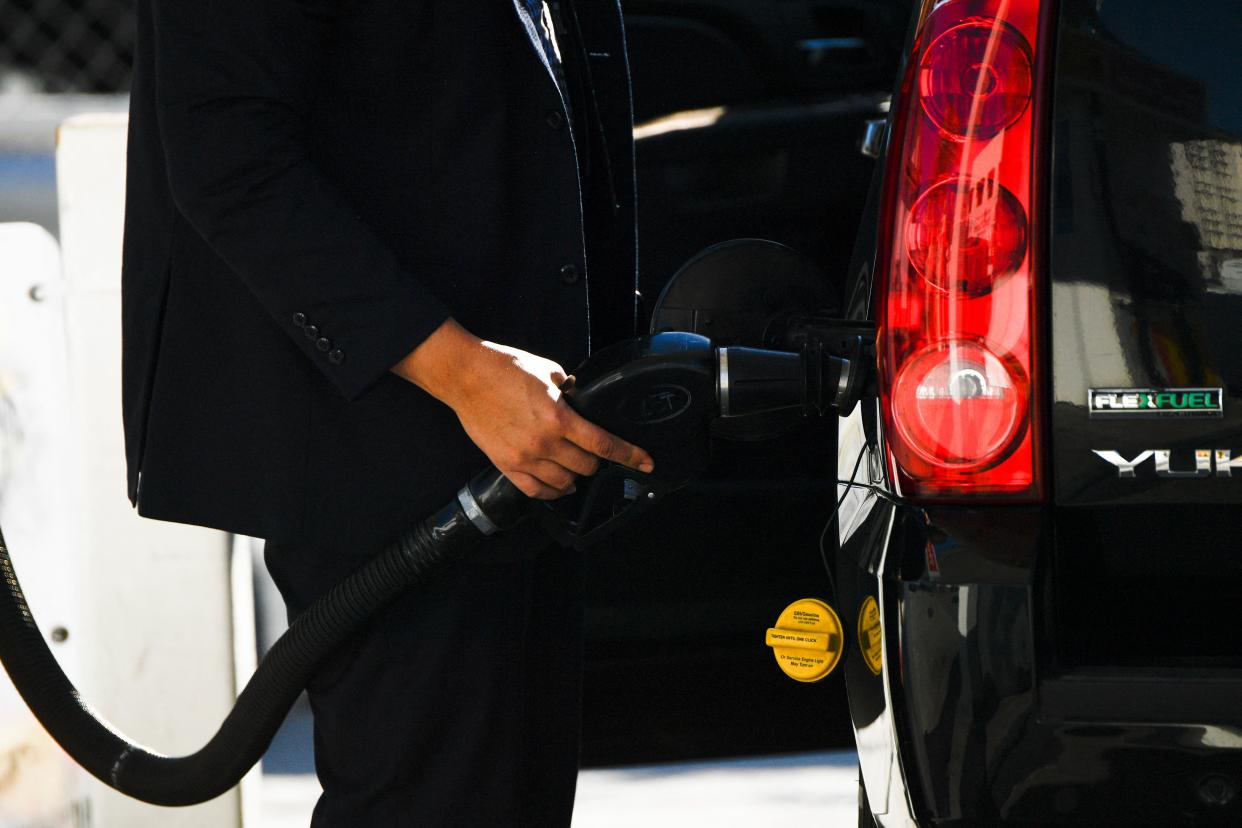Biden is worried about Putin’s war on … American drivers
President Biden is waging a multi-front campaign against Vladimir Putin’s warlike maneuvers. With the Russian president building up a troop presence in eastern Ukraine and threatening an invasion of the entire country, Biden has now announced a “first tranche” of western sanctions on Russia, with more to come if Putin goes further.
The first penalties are “demonstration” sanctions, U.S. officials say, that target two Russian banks, Russia’s ability to finance public debt, and a handful of Russian elites now cut off from the U.S. and European financial systems. Germany also said it was suspending approval of a crucial pipeline Russia spent $11 billion to build, Nord Stream 2, which would move natural gas directly from Russia to Germany through the Baltic Sea, bypassing Ukraine and other eastern European transit nations.
Putin’s aggressions threaten millions of Ukrainians, especially if ground troops begin rampaging through the country on their way to the capital, Kyiv. But Biden is worried about collateral damage extending all the way to American homes and cars, in the form of soaring energy costs that stress U.S. consumers already grappling with the highest inflation in 40 years.
While announcing the new sanctions on Feb. 22, Biden acknowledged that Americans are in the blast radius. “My administration is using every tool at our disposal to protect American businesses and consumers from rising prices at the pump,” he said from the White House. “We’re going to take robust action to make sure the pain of sanctions is targeted at the Russian economy, not ours.”
But Biden can't wrap the U.S. economy in a deflector shield that blocks all damage. Russia is the world’s third-largest oil producer, after the United States and Saudi Arabia. It sends very little oil to the United States, since the U.S. produces much of its own oil and gets most of the rest from Canada, Mexico and the Middle East. But an oil supply shock anywhere in the world affects oil prices everywhere, and fears of disrupted oil supplies from Russia are already adding about $5 to the cost of a barrel, the Eurasia Group estimates. If there would be an actual supply disruption, oil prices could go far higher.
U.S. oil prices are up 85% during the last year, with gasoline costs up 38%. These are major contributors to overall inflation, now 7.5%, the highest level since 1982. Rising inflation has coincided with plunging popularity for President Biden, whose approval rating has dropped from 55% at the start of his presidency to 42% now.
[Could you tolerate higher gas and energy prices as a cost of confronting Putin? We'd like to hear your thoughts.]
Russia is also the second-largest natural gas producer, after the United States. This is a huge problem for Europe, which gets about one-third of its gas from Russia, mainly for heating and power production. Some analysts think gas will continue to flow from Russia to Europe, because Europe needs the energy and Russia needs the money. But Europe already faces skyrocketing gas costs and this, too, could trickle out to other markets.

In his Feb. 22 remarks, Biden hinted at a new relief valve for rising energy prices, saying his administration was working on a plan “to secure stability in global oil supplies.”
After Biden spoke, a senior administration official told reporters there would soon be public details of a plan to increase energy supplies and lower prices.
“Gas and energy are not moving higher because Nord Stream 2 is halted, but because people are worried Putin will use energy to hold the world hostage,” the official said.
What could be coming? The most obvious solution would be an agreement by Saudi Arabia or other large producers to pump more oil and therefore lower prices. U.S. drillers can boost production too, but the government doesn’t control them and can’t tell them what to do. There’s already evidence, however, that U.S. drilling activity is picking up as prices rise and producers sense profit-making opportunities. That should eventually bring some price relief.
Biden and other nations could also release more oil from strategic reserves. This had almost no effect on prices last November, however, when Biden announced a release of 50 million barrels form the U.S. reserve, and a few other nations released smaller amounts.
There’s also a growing chance the U.S. could secure a new deal with Iran to put limits on its nuclear weapons program in exchange for the lifting of sanctions that would allow Iran to freely sell oil in global markets once again. That could be a meaningful amount of new supply, but it’s probably still weeks or months away, if a deal emerges.
Biden has begun talking about shared sacrifice in the face of crisis, saying on Feb. 22, “Defending freedom will have costs, for us as well, here at home. We need to be honest about that.”
After two years of COVID disruptions, however, Americans may not be in the mood for more sacrifice. Ukraine is far away, family budgets are stressed and many Americans want a demonstration that Biden cares about them.
Rick Newman is a columnist and author of four books, including "Rebounders: How Winners Pivot from Setback to Success.” Follow him on Twitter: @rickjnewman. You can also send confidential tips.
Follow Yahoo Finance on Twitter, Instagram, YouTube, Facebook, Flipboard, and LinkedIn
